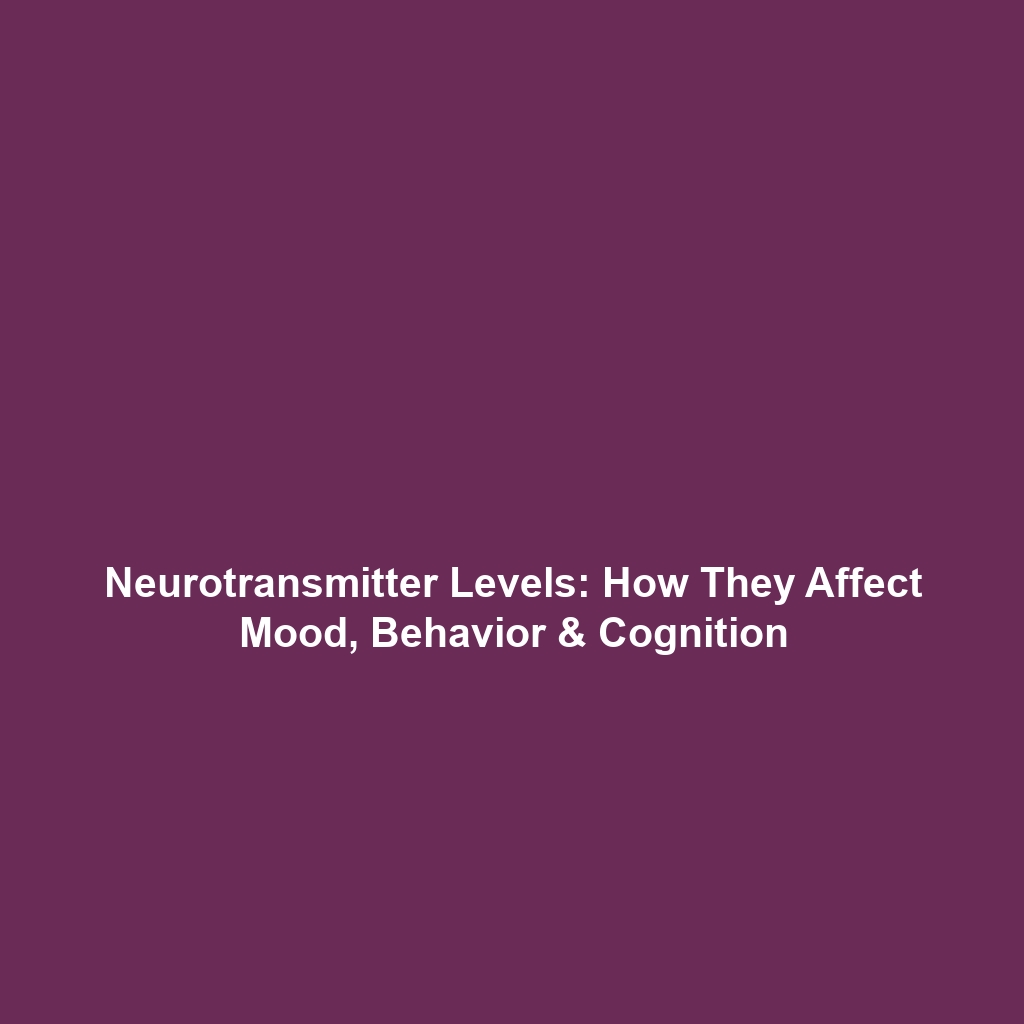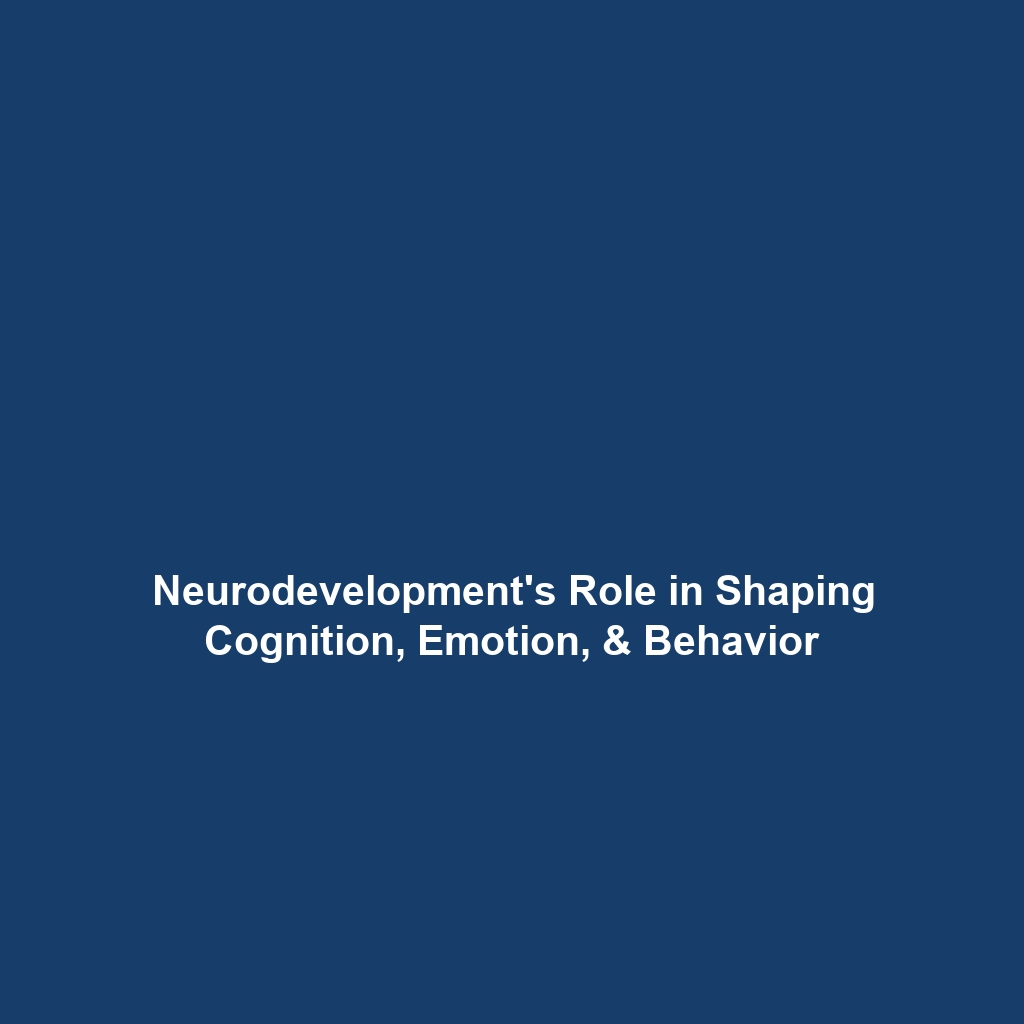Impact on Behavior, Mood, and Cognition through Changes in Neurotransmitter Levels
Introduction
The intricate relationship between behavior, mood, and cognition is significantly influenced by neurotransmitter levels in the brain. Understanding this connection is crucial in the realm of biomechanics, where the interaction of physiological processes and mechanical forces shape human performance. As neurotransmitters like dopamine, serotonin, and norepinephrine fluctuate, they directly affect our emotional and cognitive states, revealing the vital role biomechanics plays in mental health and daily functioning. Recognizing how these changes occur opens pathways for innovative applications in enhancing not only physical performance but also overall psychological well-being.
Key Concepts
Neurotransmitters and Their Role
Neurotransmitters are chemical messengers that transmit signals across synapses in the brain, crucial for influencing behavior, mood, and cognitive functions. Key neurotransmitters include:
- Dopamine: Associated with the reward system, influencing motivation and pleasure.
- Serotonin: Plays a role in mood regulation, often tied to feelings of happiness and well-being.
- Norepinephrine: Affects attention and responsiveness, critical for cognitive functions.
The Intersection with Biomechanics
In biomechanics, understanding how physical activity alters neurotransmitter levels can provide insights into improving mental health outcomes. Increased physical activity is linked to elevated serotonin and endorphin levels, promoting mood enhancement and cognitive clarity.
Applications and Real-World Uses
The implications of neurotransmitter fluctuations are far-reaching, especially in the following applications:
- Physical Therapy: Tailoring rehabilitation exercises that enhance neurotransmitter levels for improved mood and motivation.
- Sports Science: Utilizing biomechanical assessments to optimize training, leading to better cognitive and emotional resilience in athletes.
- Psychological Interventions: Incorporating movement-based therapy to facilitate neurotransmitter balance and improve mental health.
Current Challenges
Despite the promising insights, several challenges impact the study of neurotransmitter levels and biomechanics:
- Complexity of Neurotransmitter Systems: The intricate feedback loops between different neurotransmitters complicate the understanding.
- Individual Variability: Variations in genetic predispositions and lifestyle can lead to different responses to biochemical changes.
- Limitations in Research Methods: Current methodologies may not accurately capture real-time changes in neurotransmitter levels during biomechanical activities.
Future Research and Innovations
Looking ahead, several areas of research hold promise for enhancing understanding and application:
- Wearable Technology: Innovative devices that monitor neurotransmitter levels in real-time could revolutionize personal health and performance tracking.
- Biochemical Interventions: Exploring supplements or medications that can optimize neurotransmitter function alongside biomechanical training.
- Neuroimaging Advances: Improved imaging techniques could help visualize neurotransmitter dynamics during various stress and recovery periods.
Conclusion
In conclusion, the impact of neurotransmitter levels on behavior, mood, and cognition presents significant opportunities and challenges within biomechanics. Understanding these relationships can lead to enhanced performance, improved mental health, and innovative applications in therapy and training. Continuing research in this area is essential for unlocking new potentials of human performance. For further reading on neurotransmitters and biomechanics, explore our articles on neurotransmitter functions and biomechanical applications.

